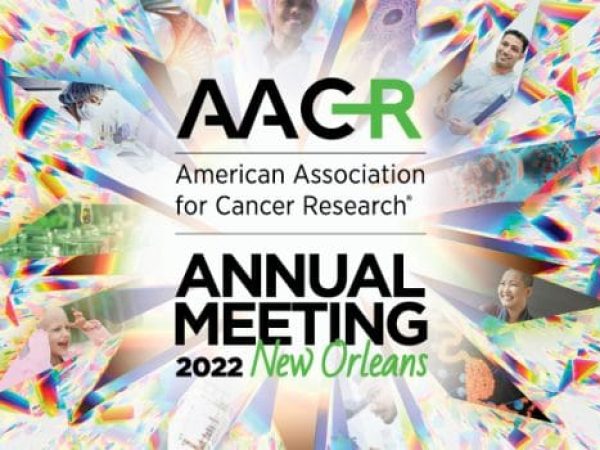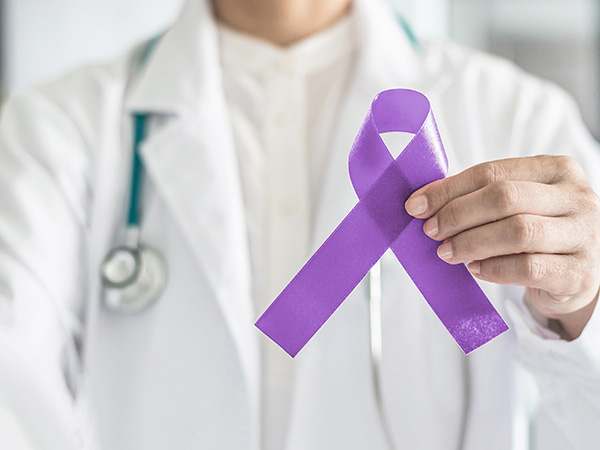What is Convergence? How Can It Further Cancer Research?
In addition to the Annual Meeting and other recurring large conferences, the American Association for Cancer Research (AACR) holds several Special Conferences throughout the year that focus on emerging areas of cancer research. These special conferences allow for scientists to discuss niche areas and move that field forward.
Thirty years ago, the AACR held its inaugural Special Conference, titled “Gene Regulation and Oncogenes” in Chatham, Massachusetts. This meeting was chaired by Phillip Sharp, PhD, FAACR, who later received the Nobel Prize in Physiology or Medicine for his landmark discovery of RNA splicing.
This year, Sharp is returning to co-chair the anniversary meeting along with William Hahn, MD, PhD. The 30th Anniversary AACR Special Conference Convergence: Artificial Intelligence, Big Data, and Prediction in Cancer is focusing on a relatively new interdisciplinary field that seeks to further cancer research through the use of mathematics and computation, among other disciplines.
We had the opportunity to speak with both co-chairs about convergence and several areas of interest that will be discussed at the upcoming meeting, to be held Oct. 14-17 in Newport, Rhode Island.
What is “convergence?”
Sharp: Convergence is a term we introduced several years ago to describe the interdisciplinary engagement of physics, computation, big data, and engineering into the biomedical sciences. It’s the coming together of these basic disciplines, which has evolved over decades to be almost a discipline unto itself. The underlying concept is the integration of knowledge from recent technology advances – such as sequencing information from genomes and single cells, imaging modalities that can penetrate deep into the body, and utilizing medical records that now span decades – in the most avant-garde ways to better understand and treat cancer.
Hahn: Convergence is the idea of bringing together work and technology and new approaches from very different parts of science to try to answer challenging questions in cancer.
This is the 30th anniversary of the inaugural AACR Special Conference. Where was the field of convergence 30 years ago? What sets this meeting apart?
Sharp: Thirty years ago, in the field of cancer biology, convergence was utilized more as a service, such as making joints or prosthetics; convergence wasn’t necessarily incorporated into the decision-making process for a physician. Now, the fruits of this field are an integral part of the information-gathering system, and we can ask new questions with this new technology. We have new opportunities that we didn’t have 30 years ago, and we have the responsibility to take advantage of it.
Hahn: I think “convergence” wasn’t even in the lexicon back then. Thirty years ago, we did not have the molecular biology tools that we have today that allow us to ask questions about genes, proteins, and nucleic acids to understand cancer in new ways. This meeting is to stimulate and embolden the idea that computation, mathematics, and statistics are necessary to make further progress in cancer. We hope this meeting will be provocative in getting people to think outside the box.
One of the things that excites me about this meeting is that we have a lot of presenters who would not identify themselves as cancer researchers. That’s unique for a special conference, as most everyone that attends a meeting like this works on a very focused area of cancer. We have generated a lot of interest in this meeting for experts outside the oncology field and because of this, I think we’re going to have a really exciting conference.
Using imaging techniques to predict cancer phenotypes is being discussed as an area where convergence can play a big role. Can you talk about this?
Sharp: Today, we can use many types of imaging to probe the status and malignancy of a cancer. Utilizing biopsy samples, highly trained pathologists can look at tissues and, based on their training and past experiences, make a diagnosis of how invasive, how abnormal, how possibly life-threatening a malignancy is. Now that we have decades of histology slides and information about the outcomes of those patients, we can take all of that information and use machine learning (pattern recognition correlated with diagnosis) to train computers to make those correlations between histology patterns and malignancy.
Hahn: Most of the imaging that we use today is sort of like drawing a map – we can look at landmarks in a relatively static way. What we really want is an imaging technique that gives us a dynamic view of the cancer, so that we can gather information about what’s changing with time in the tumor. Applying the latest technologies, such as machine learning, can help us garner information about the function of the cancer cells or the function of the immune cells as they are responding to the tumors.
How can we use convergence to predict cancer response?
Sharp: I’ll give an example using breast imaging, which is an exciting area of discussion taking place at the meeting. Breasts have different densities of tissue and different patterns when malignant cells are present. If we can use images taken via X-ray or magnetic resonance imaging (MRI) and process them against possible outcomes – whether it be surgery, chemotherapy, or a specific drug– we could make better predictions about how the patient will respond to these different treatment options. By perfecting a relatively straight-forward technology using advanced computation, we can enhance the effectiveness and ultimately the benefit of the procedures that are already routinely used.
Hahn: Today, when we talk about cancer response, we treat a patient and then we measure the size of the tumor at some point in the future. I think a direction we could pursue through convergence is being able to identify unique biomarkers within the tumor using imaging to tell us how a patient is responding to treatment. Equipped with this kind of knowledge, we could potentially make changes to the therapy for a patient who is not responding to treatment, and that would really transform the field.
In terms of intervention and screening, how can we use convergence to aid us?
Sharp: Today, we have guidelines that we use to make screening recommendations, depending on risk factors and the type of cancer. In the future, we can better utilize genomics and updated screening technology to identify risk factors for cancers and ultimately say to a patient with greater confidence what the risks for developing certain cancers are. Now that we have a large library of medical records that can be correlated with outcome, we can use convergence to predict an odds ratio for patients based on risk factors, such as obesity, smoking habits, activity levels, and others. These calculated odds ratios can tell us who needs more intensive screening to enable the identification of potential cancers at an earlier time. This sort of big data integration is going to be important not only for patients, but also for moving the field forward.
Hahn: To be able to apply convergence in the areas of screening and intervention, there are still several pieces that must come together, and I think we’re at the beginning of that. This is the right time to have a meeting that attempts to bring experts in these areas together and allows those questions to be addressed. We are hoping that new ideas come out of that.
What major challenges do you foresee in applying convergence to advance cancer research and treatments?
Sharp: There are many. One of the big ones is that our health care system is structured for cures, which is great, and we’ve made a lot of cures, and this is to be celebrated and continued. However, with the amount of new technology and opportunities to personalize treatment now, we need a system where there is remuneration for more research done on outcomes that benefit patients, our health care system, and provide more direction. This is a big part of it.
Another challenge is in integrating physics, engineering, and computation into biological systems. We need a process of engagement, of motivating, of bringing people together and sharing information and education. That takes time, but it is happening. When I came to MIT 40 years ago, there were very few engineers involved in life science. Now, a third of them are, and maybe even more. At MIT and other institutes, students interested in biology are also pursuing degrees in computer science and engineering and physics, mathematics. The way we do biomedical sciences, the meetings we conduct, and the whole field is undergoing a transformation and it is a welcome change.
Hahn: I think one of the challenges we have in cancer research is that we don’t yet have enough data to conduct robust analyses. A lot of past research in biology has been driven by a reductionist view of how things work; we’re used to thinking about one pathway being activated, or one gene responding to a particular treatment. I think that we’re beginning to understand that biology is much more complex, and that multiple things happen when you treat a patient with a drug. We are discovering that the heterogeneity of tumors and bodily tissues is the norm, rather than the exception. We need to shift our thinking about biological problems and realize that these systems are complex, not binary.
Sharp and Hahn discussed the special conference in a recent interview with the AACR.
https://www.youtube.com/watch?time_continue=10&v=ksYkYYx_HLI






